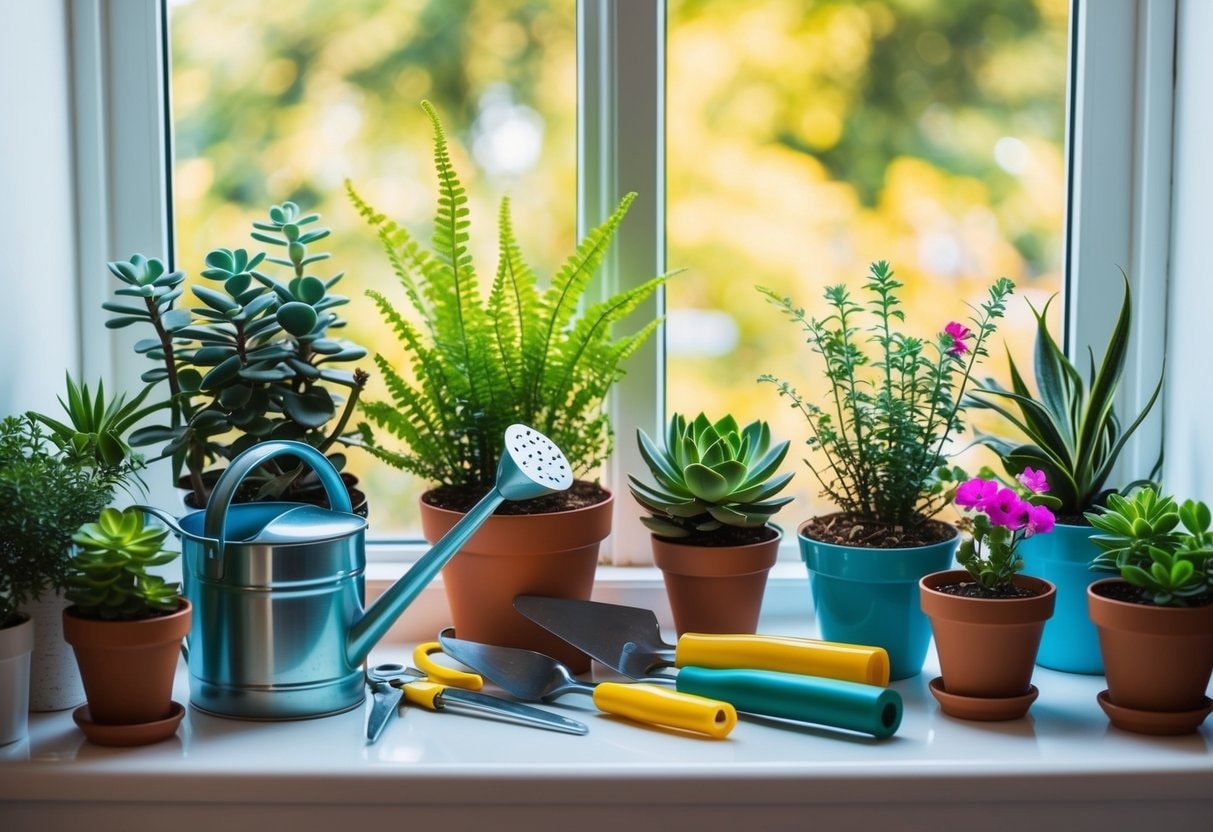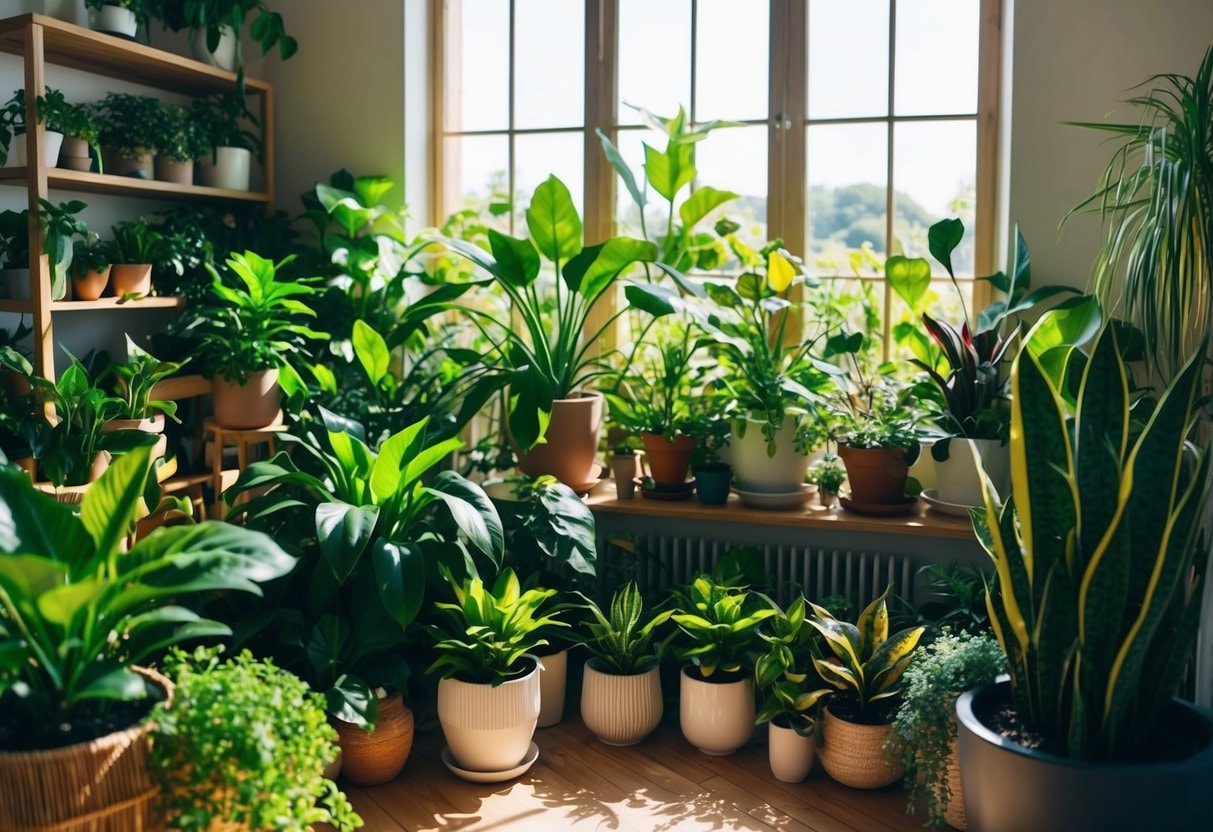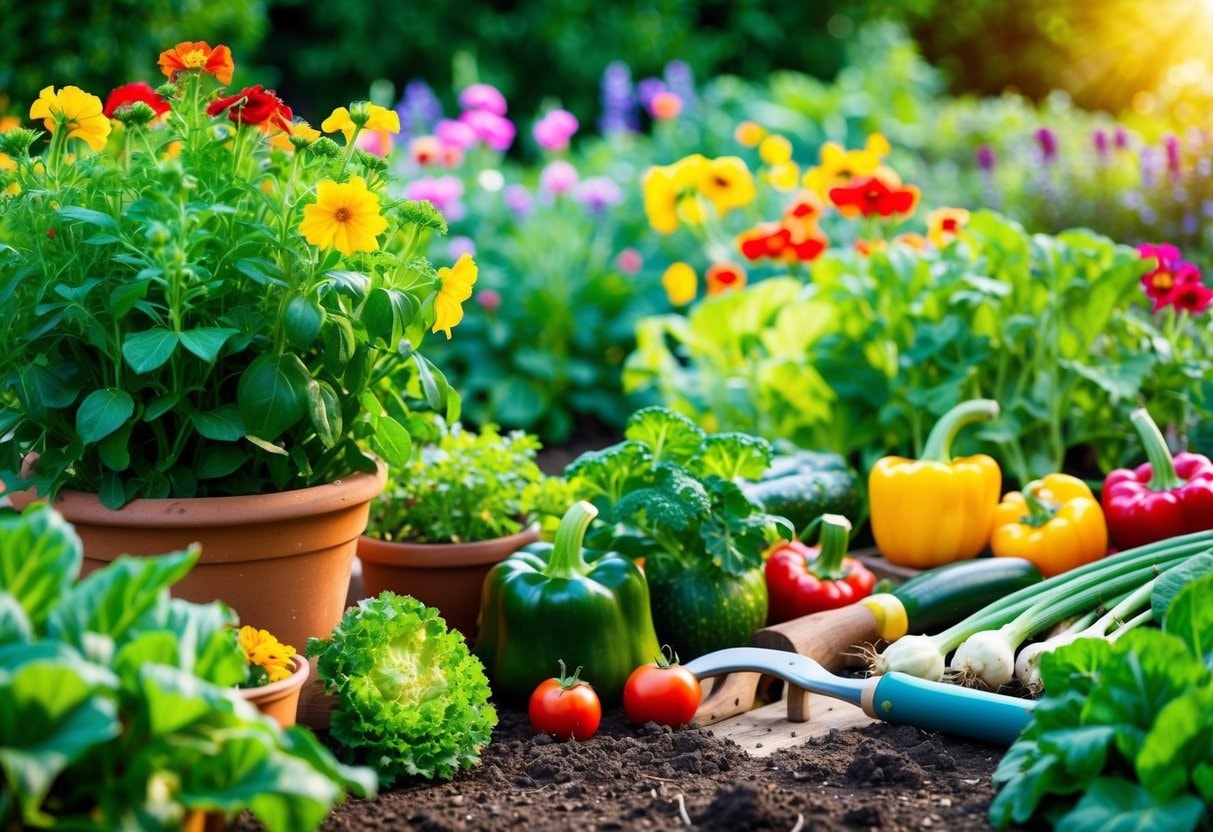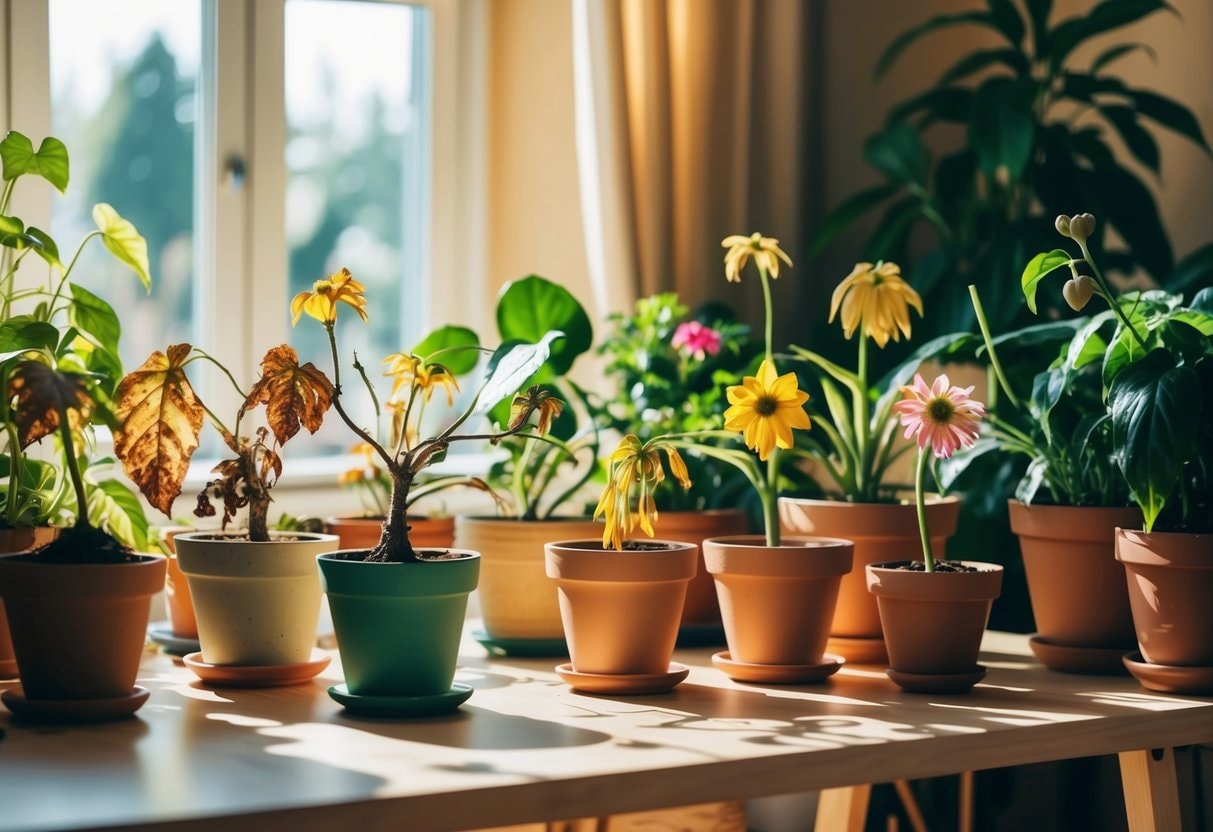HousePlantJoy is supported by our audience. When you purchase through one of our links, we may earn a small affiliate commission. As an Amazon Associate I earn from qualifying purchases. Your cost is not affected.
==================
The Therapeutic Joy Of Plant Care offers more than just an aesthetic boost to your home. It has a profound impact on mental wellbeing and emotional health. Nurturing a living organism creates a sense of purpose and connection, allowing for moments of mindfulness and peace in our otherwise busy lives. Watching a plant thrive under your care can foster a deep sense of accomplishment, while the routine of watering, pruning, and repotting encourages consistency and patience.
Plant care provides a break from the digital world and invites you into a soothing, tactile experience that centers you in the present moment. Whether tending to a lush monstera or coaxing new growth from a modest succulent, the bond you build with your plants can offer emotional relief and relaxation. Discover how this therapeutic joy can bring more balance and calm into your daily routine.
Green Thumb, Happy Heart: The Therapeutic Joy of Plant Care – Nurturing Nature for a Happier You
Caring for plants isn’t just a hobby – it’s a way to nourish nature and ourselves. I’ve found that tending to my green friends brings joy and peace. Growing plants can reduce stress, boost mood, and improve physical health. There’s something magical about nurturing a tiny seed into a thriving plant. I love watching new leaves unfurl and flowers bloom.
It connects me to the rhythms of nature in a way that few other activities can. Plus, surrounding myself with plants makes my home feel like a calm oasis. You don’t need fancy equipment or expert knowledge to get started with plant care. Even small acts like watering, pruning, or repotting can be therapeutic. I find it so rewarding to see my plants flourish under my care. It gives me a sense of purpose and accomplishment.
Understanding Plant Needs
Plants need light, water, and nutrients to grow. I always check how much light a room gets before choosing a plant. Some like bright sun, while others prefer shade. Watering is key. I feel the soil with my finger – if it’s dry an inch down, it’s time to water.
Overwatering can harm plants, so I’m careful not to give too much. Nutrients come from the soil. I use potting mix for indoor plants and add fertilizer every few months during growing seasons. Temperature matters, too. Most houseplants like it between 60-75°F. I keep them away from drafts and heat sources.
Selecting Your Plants
I start with easy-care plants when I’m new to gardening. Snake plants, pothos, and spider plants are great for beginners. I match plants to my home’s conditions. If I have low light, I pick plants that can handle it.
For sunny spots, I choose sun-loving varieties. Size is important. I think about how big a plant will grow and if I have space for it. I also consider my schedule. I pick low-maintenance plants that don’t need daily care if I’m busy.
Tools and Equipment
A few basic tools make plant care easier. I always have:
- Watering can.
- Pruning shears.
- Spray bottle for misting.
- Small trowel for repotting.
Good pots are crucial. I make sure they have drainage holes to prevent water buildup. I keep a stock of potting soil, pebbles for drainage, and some all-purpose fertilizer. I use a mixture of soap and water in a spray bottle for pest control. It’s safe and effective for most common pests.
Psychological Benefits of Greenery
I’ve found that plants can reduce stress and anxiety. When I’m feeling overwhelmed, spending time in nature helps me relax. Even indoor plants have this effect. Having plants at home or work improves my mood and focus. I feel more creative and productive when surrounded by greenery.
Plants also help clean the air, which is good for my health. Caring for plants gives me a sense of purpose. It’s rewarding to nurture something and watch it grow. This can boost self-esteem and life satisfaction.
Plants and Mental Wellbeing
Plants support emotional wellness in many ways. Gardening and plant care are forms of mindfulness that calm my mind. Working with plants reduces my negative thoughts. It shifts my focus to the present moment. This helps me manage depression and anxiety.
Plants create a soothing environment. Their colors and textures are pleasing to look at. Some plants, like lavender, have scents that promote relaxation. I’ve found that plants foster social connections, too. Talking about plants or gifting them to others builds relationships. Community gardens bring people together in nature.
Did you Know?
Joining plant groups can be rewarding to grow as a gardener while making new connections. Both local clubs and online communities provide valuable resources for learning and sharing tips. It’s a fun and enriching experience to connect with fellow plant enthusiasts in your area, and you can pick up countless useful tricks from seasoned members along the way.
Creating Your Indoor Oasis
Transforming my living space into a green sanctuary brings me so much joy. Embracing The Therapeutic Joy Of Plant Care, I love designing the perfect spots for my leafy friends and picking plants that thrive in my home’s environment. It’s like creating my little indoor jungle.
Designing Your Plant Space
When I create my plant space, I think about light, layout, and aesthetics. I place plants near windows for natural light. South-facing windows are great for sun-loving plants. I use hanging planters and wall-mounted pots for low-light areas to maximize vertical space.
I group plants with similar needs. This makes watering and care easier. I also consider how plants look next to each other. Mixing leaf shapes and sizes adds visual interest. I use pretty pots and stands to enhance my decor. Plant shelves let me display smaller plants. I suggest creating a living wall with various plants for a bold statement.
Picking Plants for Your Environment
I choose plants based on the light conditions in my home. Bright spaces are perfect for fiddle leaf figs or rubber plants. For lower light, I go with snake plants or pothos. I think about my lifestyle, too. If I travel often, I pick low-maintenance plants like succulents. For humid bathrooms, ferns and peace lilies thrive. Here are some easy plants I love for beginners:
- Spider plant.
- ZZ plant.
- Chinese evergreen.
- Dracaena.
- Philodendron.
I also consider my pets. Some plants can be toxic, so I researched safe options for curious cats or dogs.
Watering and Feeding
I always check the soil before watering. I stick my finger about an inch deep – if it’s dry, it’s time to water. For most plants, I water deeply but less often. This helps roots grow deeper and more robust. I use a long spout watering can to get water to the roots.
Overwatering is a common mistake, so I’m careful not to drown my plants. Feeding is just as important. I use a balanced, water-soluble fertilizer every few weeks during the growing season. But I’m careful not to overfeed – too much can harm plants.
Pruning and Maintenance
Regular pruning keeps my plants healthy and looking great. I remove dead or yellowing leaves to prevent disease spread. For flowering plants, I deadhead spent blooms to encourage more flowers. I use clean, sharp pruning shears to make clean cuts. This prevents damage and helps plants heal faster.
Maintaining plant shape is fun, too. I pinch back growing tips to encourage bushier growth. For vining plants, I provide support like trellises or stakes. I also keep an eye out for pests. If I spot any, I remove them by hand or use organic pest control methods. Prevention is key, so I space plants properly for good air circulation.
The Therapeutic Joy Of Plant Care: Common Plant Issues
Taking care of plants can be tricky at times. I’ve faced many challenges, but learning to spot and fix common problems has made me a better plant parent. Let’s explore some key issues and how to handle them.
Pest Control
Pests can be a real headache for us plant lovers. I’ve found that watching for signs of infestation is crucial. Tiny bugs, webbing, or strange spots on leaves are red flags. When I spot pests, I act fast. A simple soap and water mix works wonders. I spray it on affected areas, focusing on bug hotspots. For tougher cases, I use a DIY solution:
- Two parts rubbing alcohol.
- Five parts water.
- One tablespoon of liquid dish soap.
I apply this directly to the pests. It’s gentle on my plants but tough on bugs. Regular checks help me catch problems early, keeping my green friends happy and healthy.
Disease Prevention
Plant diseases can be sneaky, but I’ve learned some tricks to keep them at bay. Good airflow is key. I make sure my plants are manageable and prune when needed. Proper watering is crucial. I avoid getting leaves wet, as this can lead to fungal growth. Instead, I water at the base of the plant. I also use clean tools when pruning to prevent the spreading of any nasties. If I do spot signs of disease, like odd leaf spots or wilting, I act fast:
- Remove affected parts
- Adjust care routine if needed
- Use organic treatments if available
I keep my plants thriving by staying vigilant and providing the right care. It’s all part of the joy of being a plant parent!
Rainwater
I save water by collecting rainwater in barrels. This helps during dry spells. I also water plants early in the morning to reduce evaporation.
Organic
Instead, I use organic pest control methods like companion planting and handpicking bugs. Native plants are my garden’s best friends.
They need less care and water. Plus, they support local wildlife. I choose recycled materials for garden tools and structures when I can. It’s a small step that makes a big difference. Mulching is another trick I use. It keeps moisture in and weeds out. I use natural mulch like wood chips or leaves.
Seasonal Plant Care Tips
The Therapeutic Joy Of Plant Care comes from understanding that plants need different care as the seasons change. Over time, I’ve learned key tricks to keep my green friends happy year-round. Here are my top tips for spring, summer, fall, and winter plant care, each contributing to The Therapeutic Joy Of Plant Care.
Spring and Summer Care
I start ramping up watering in spring as my plants wake up from winter. I check for new growth and prune any dead bits. It’s a great time to repot if needed. I also begin fertilizing every few weeks. For summer, I keep a close eye on water needs. Hot days mean thirsty plants! I move sensitive plants away from hot windows. Outdoor plants may need daily watering. I watch for pests, too – they love the warm weather. My summer checklist:
- Water deeply and regularly.
- Protect from intense sun.
- Check for pests weekly.
Fall and Winter Preparation
As fall arrives, I start cutting back on watering and fertilizing. Many plants slow their growth now. I bring my outdoor plants inside before the first frost. It’s a good time to clean leaves and check for pests. For winter, less is more.
I water much less often – only when the soil feels dry an inch down. Most plants need very little food now. I move plants away from cold drafts and give them extra light on short days. My winter care tips:
- Water sparingly.
- Hold off on fertilizer.
- Increase humidity with pebble trays.
Embracing Growth: The Lasting Impact of The Therapeutic Joy Of Plant Care
In conclusion, embracing The Therapeutic Joy Of Plant Care can transform your life subtly yet profoundly. Through nurturing plants, we cultivate a sanctuary of calm and balance, creating a serene escape from the hustle and bustle of everyday life. This hands-on approach to self-care enriches our homes and nourishes our hearts and minds, fostering a sense of achievement and wellbeing.
Whether you’re tending to a vibrant indoor garden or simply caring for a few favorite houseplants, the process of growth and care connects you to nature and offers a refreshing break from digital distractions. As you watch your plants flourish, you’ll find that the rewards of this therapeutic practice extend far beyond the lush green leaves. Embrace The Therapeutic Joy Of Plant Care and discover how this simple yet impactful activity can enhance your mental and emotional health, one leaf at a time.












